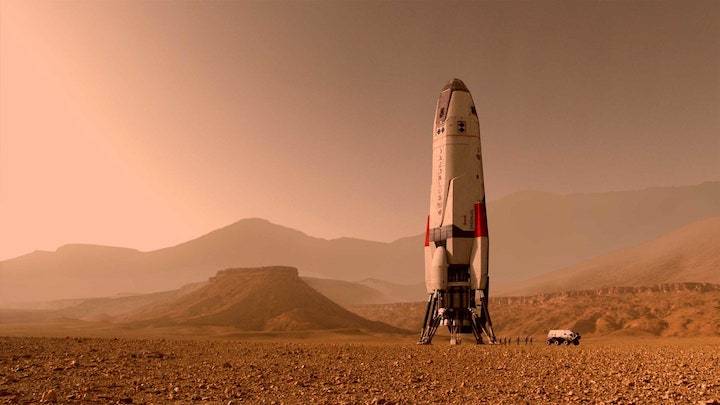28.06.2020

As it was during the recent launch of the SpaceX Falcon 9 booster, carrying the Crew Dragon and its two-person crew toward a rendezvous with the International Space Station, the entire space community and much of the worldwide general public are truly excited about the planned July 22 launch of the Mars 2020 Perseverance rover.
They should be.
NASA considers the 2,300-pound Perseverance rover to be a “robotic scientist.” Its astrobiology mission, much like the introduction to “Star Trek,”is to seek out new life — in this case, “signs of past microbial life on Mars.” In addition, Perseverance will characterize the Martian climate and geology, collect rock and soil samples, fly a drone over the surface, and serve as the latest stepping-stone for human exploration of the Red Planet.
It’s exciting and inspiring.
But, along with that excitement and promise comes a serious and potentially troubling disconnect. When Perseverance launches atop the United Launch Alliance (ULA) Atlas 541 booster, if you squint your eyes just right, it will seem exactly the same as when Viking 1 was launched on Aug. 20, 1975, to touch down on the Martian surface on July 20, 1976. The point is that, in the 44 years between the Viking 1 landing and the launch of Perseverance, we are using basically the same chemical rocket propulsion technology.
The same example applies to the SpaceX Falcon 9 booster and the Crew Dragon spacecraft. When that lifted off at the end of May, it was reminiscent of watching John Glenn in the “Friendship 7” Mercury spacecraft being launched into orbit by an Atlas (6) booster 58 years ago. There’s little real difference in the technology.
Recognizing the seriousness of this problem, NASA last year highlighted, “The future of manned space exploration and development of space depends critically on the creation of a dramatically more proficient propulsion architecture for in-space transportation.”
Almost six decades after Glenn reached orbit, technology on Earth evolves at blinding speeds and in life-improving ways — and yet, rocket propulsion remains virtually the same. How? And more importantly, why?
Space exploration, in the most favorable of circumstances, remains a harsh and risky business. Knowing that, mitigating risk and exposure should be “Job One” for those reaching for the stars.
When Perseverance launches, it will be seven months until it touches down in the Jezero crater on Mars — basically, the same length of time that it took Viking 1 to reach Mars. What would the United States look like today if we still relied upon horse-and-buggy travel and the steam engine?
When humans do venture out to Mars, what if, instead of seven or nine months for a one-way journey, they could get there in seven or nine weeks? By dramatically cutting the time needed to get from the Earth to Mars, we would greatly reduce the risk to human crews. Beyond that, we would make Mars and the rest of the near solar system infinitely more accessible and promising.
The obvious question becomes: Is such a leap in technology possible? I believe the answer is, “Yes.” It’s called Fusion propulsion and several companies in the United States are working to perfect the concept.
Unfortunately, at least from a national security perspective, this same technology is also being developed in China and Russia. That begs an even more important question: Should the U.S. government be instituting Manhattan Project-like urgency to develop fusion propulsion for space travel?
NASA made a winning bet by getting behind SpaceX. Should NASA and the Department of Defense, through DARPA (Defense Advanced Research Projects Agency), get behind the fusion propulsion program now? Almost seven decades of no progress in the rocket propulsion field would seem to render that a rhetorical question.
As that horse-and-buggy technology limps along, ever so slowly pushing Perseverance toward Mars, squint your eyes one more time and imagine it going supersonic by comparison. If you don’t, the Chinese and the Russians surely will.
Douglas MacKinnon was a writer in the White House for Presidents Ronald Reagan and George H.W. Bush, and former special assistant for policy and communication at the Pentagon during the last three years of the Bush administration. He was an adviser to NASA’s space shuttle team and worked space-related issues while at the Pentagon. He is the author of: “The Dawn of a Nazi Moon: Book One.”
Quelle: The Hill
